The AMD Radeon RX Vega 64 & RX Vega 56 Review: Vega Burning Bright
by Ryan Smith & Nate Oh on August 14, 2017 9:00 AM ESTAshes of the Singularity: Escalation
A veteran from our 2016 game list, Ashes of the Singularity: Escalation continues to be the DirectX 12 trailblazer, with developer Oxide Games tailoring and designing the Nitrous Engine around such low-level APIs. Ashes remains fresh for us in many ways: Escalation was released as a standalone expansion in November 2016 and was eventually merged into the base game in February 2017, while August 2017's v2.4 brought Vulkan support. Of all of the games in our benchmark suite, this is the game making the best use of DirectX 12’s various features, from asynchronous compute to multi-threaded work submission and high batch counts. While what we see can’t be extrapolated to all DirectX 12 games, it gives us a very interesting look at what we might expect in the future.
Settings and methodology remain identical from its usage in the 2016 GPU suite.
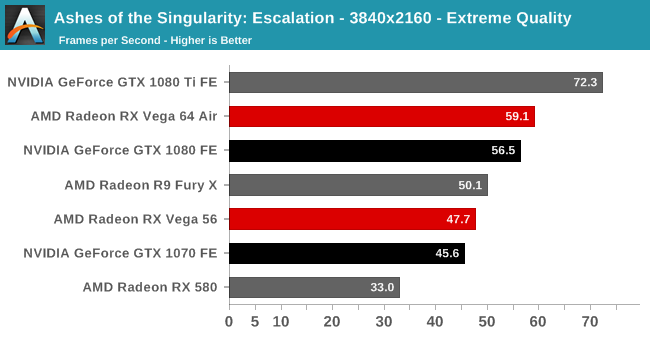
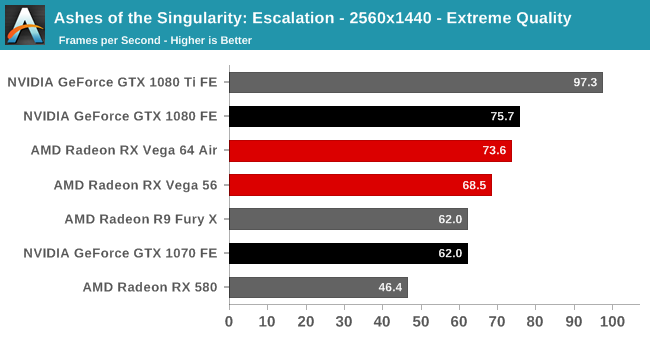
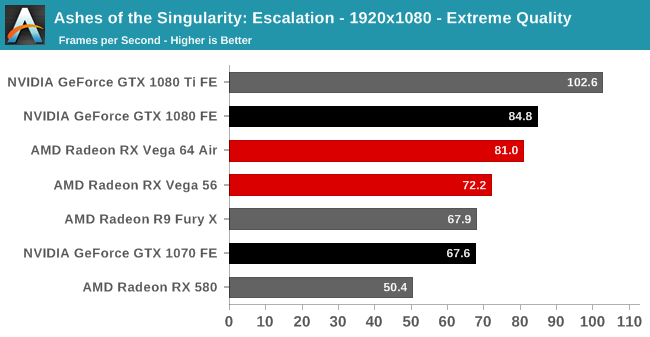
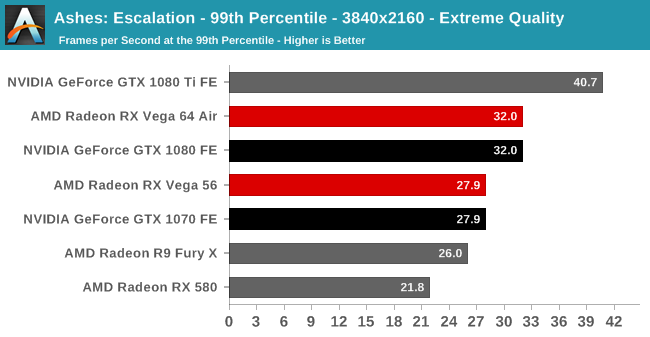
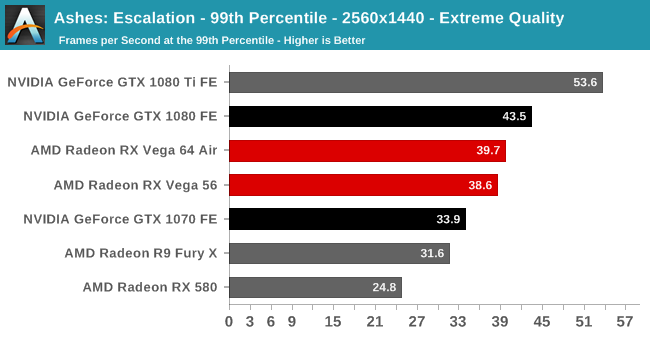
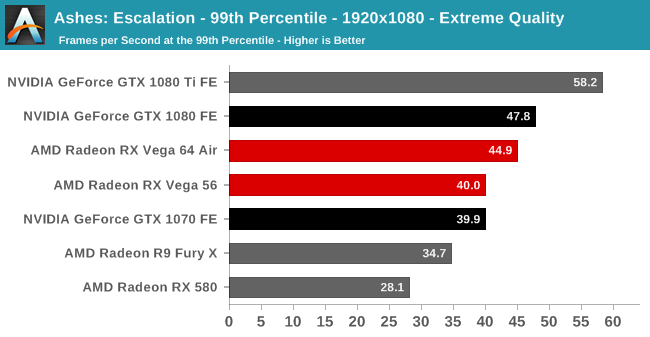










213 Comments
View All Comments
msroadkill612 - Monday, August 14, 2017 - link
Anyone who is kinda meh about a vega 56 or a 1070, and plans a ryzen rig, is mad not to get the sibling vega imo.Synergies are bound to pay dividends for some time to come.
Leyawiin - Monday, August 14, 2017 - link
lol - "synergies". That was disproved years ago.mapesdhs - Monday, August 14, 2017 - link
I remember the days when tech sites were investigating why NV cards seemed to run better on AMD hw, think it was back in the P67 days or somesuch. The issue faded away, but it proved there's not necessarily a benefit to having all the tech from one side of the fence.beast6228 - Monday, August 14, 2017 - link
AMD pulled an Nvidia on this one, that touted $499 ended up being $599 and there was very limited supply on launch. I went to Microcenter and they only had 4 cards, 2 Gigabytes and 2 XFX. When I saw the $599 I was like, you can buy a faster, cooler and less power hungry 1080 for $100 less. This performance does not warrant this high price, sorry AMD you failed pretty hard.coolhardware - Monday, August 14, 2017 - link
Glad to hear Microcenter at least had *some* stock. Everywhere seems out now and I am just wondering when Amazon is going to finally pull the trigger on their cards and bundles!Aldaris - Monday, August 14, 2017 - link
How is it AMD's fault sellers are ignoring RRP?mapesdhs - Monday, August 14, 2017 - link
$750 in the UK (equivalent). AMD is responsible for the hype though, and thus arguably for the demand, so if they can't meet the supply then sellers can spike the prices to exploit the demand. Economics 101. AMD must have known that either the power/noise behaviour wasn't so good, or the supply could not be met. They're not directly responsible, but the resulting pricing should not be a surprise. Those buying them at inflated prices are just the ones who either don't know about the performance/power/noise issues or don't care (Vega64 performs better than I expected, but at 20% more expensive than a 1080 FE it makes no sense. Heck, for the cost of a 64/Liquid in the UK one can get a 1080 Ti.BrokenCrayons - Monday, August 14, 2017 - link
GPU power consumption was already too high before Vega's release. I think it's a mistake to raise that already high bar even higher.Smell This - Monday, August 14, 2017 - link
Good for AMD.You guys touched on it, but this is TSMC 28nm 'big chip' shrunk to GloFo 14nm LPP. Impressive 15% smaller with nearly 50% more transistors.
And, it seems to me with the Infinity Fabric the next logical step is Zen+HBM2+Stars.
Make it so, Dr Su!
FreckledTrout - Monday, August 14, 2017 - link
Or vega + vega + HBM2 on a 7nm process aka Navi